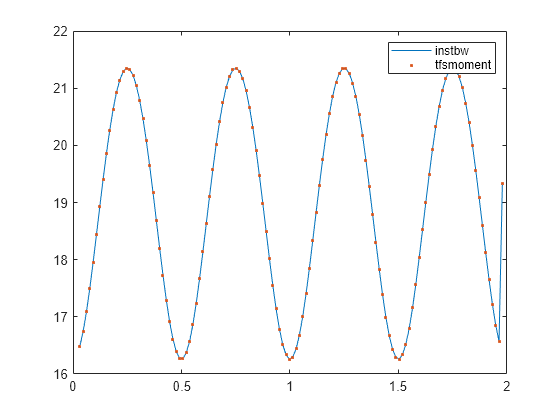instfreq
순시 주파수 추정
구문
설명
ifq = instfreq(___,Name=Value)
instfreq(___)에 출력 인수를 지정하지 않으면 추정된 순시 주파수를 플로팅합니다.
예제
입력 인수
이름-값 인수
출력 인수
세부 정보
참고 문헌
[1] Boashash, Boualem. “Estimating and Interpreting the Instantaneous Frequency of a Signal. I. Fundamentals.” Proceedings of the IEEE® 80, no. 4 (April 1992): 520–538. https://doi.org/10.1109/5.135376.
[2] Boashash, Boualem. "Estimating and Interpreting The Instantaneous Frequency of a Signal. II. Algorithms and Applications." Proceedings of the IEEE 80, no. 4 (May 1992): 540–568. https://doi.org/10.1109/5.135378.













